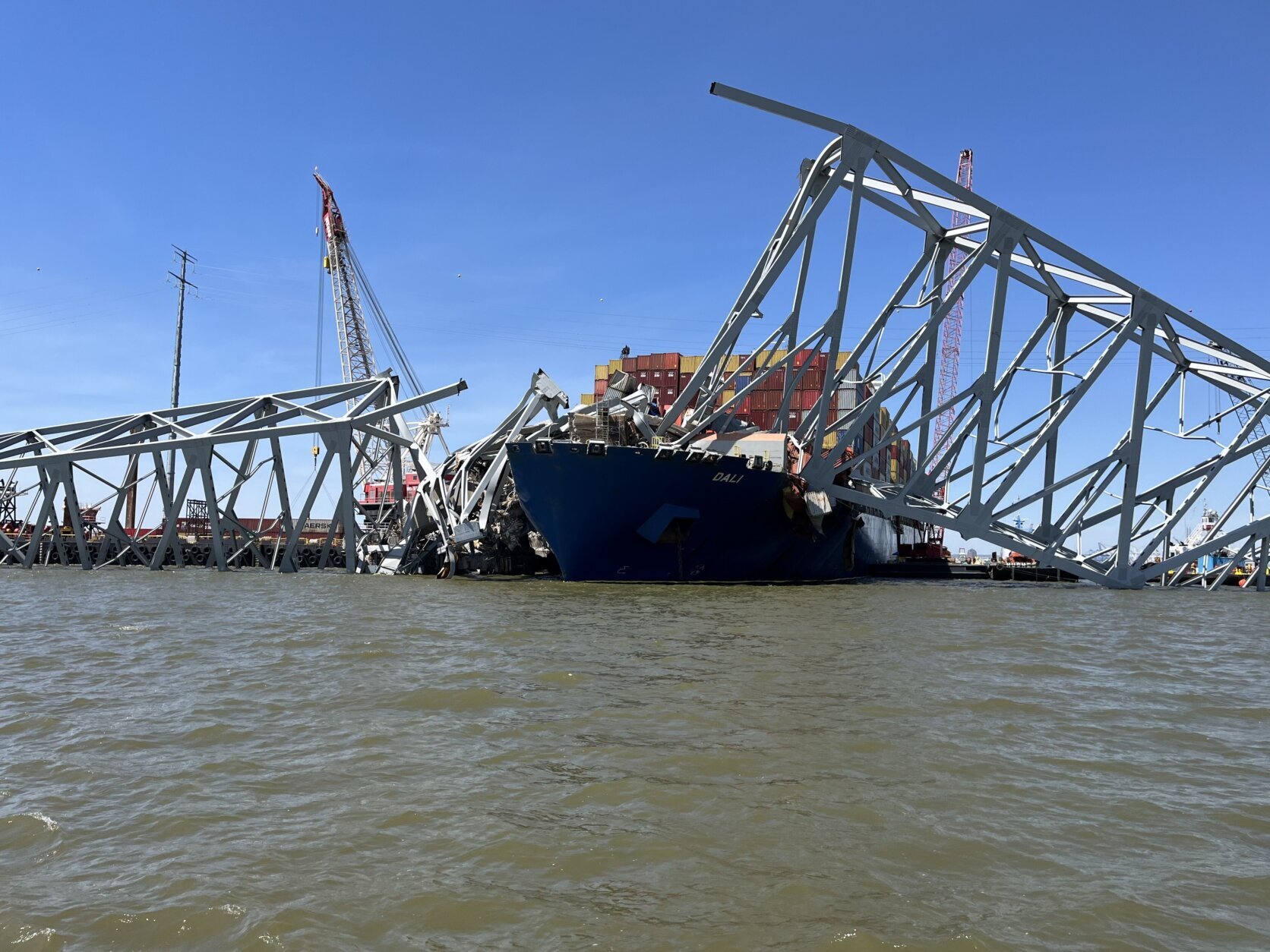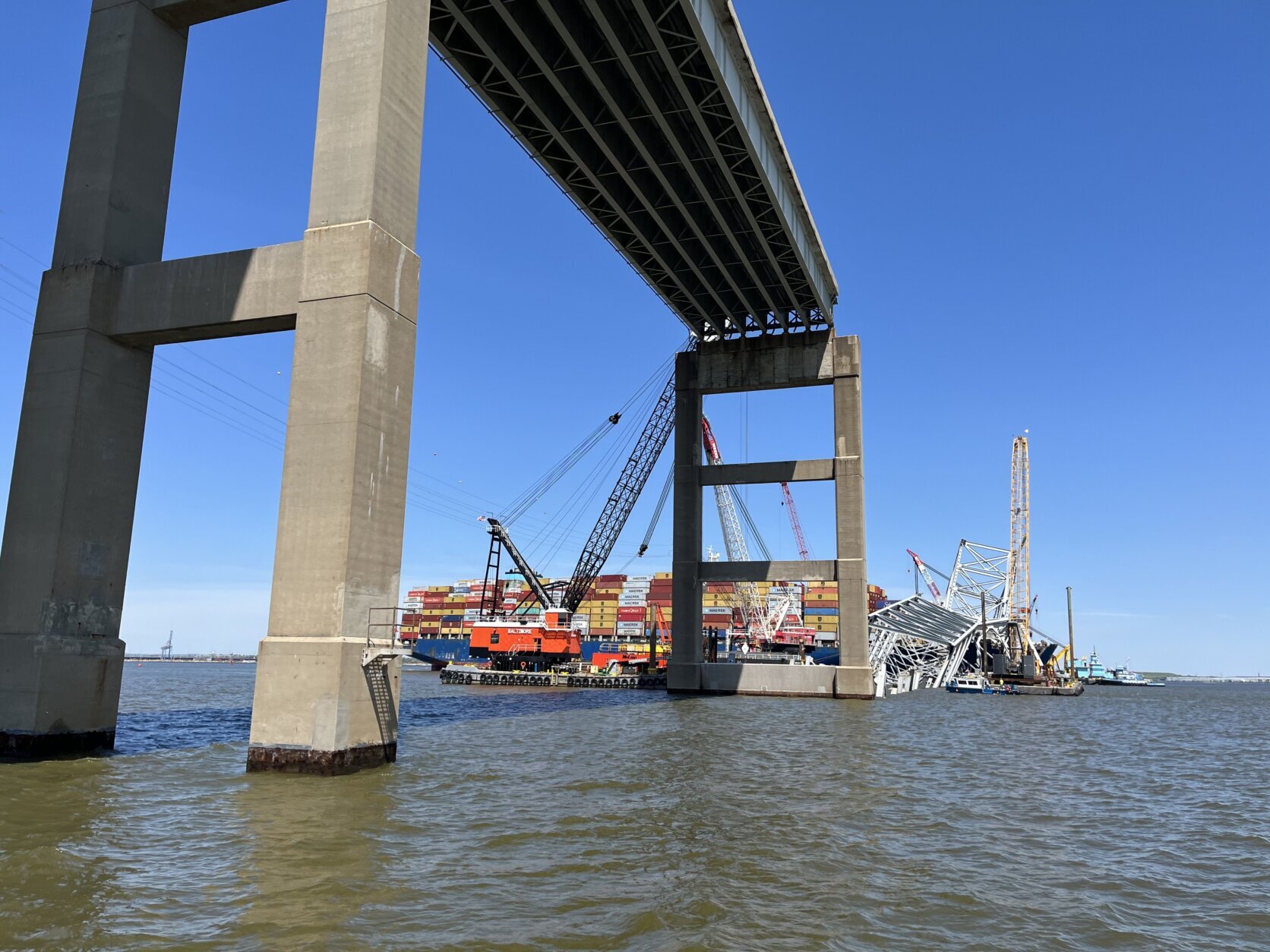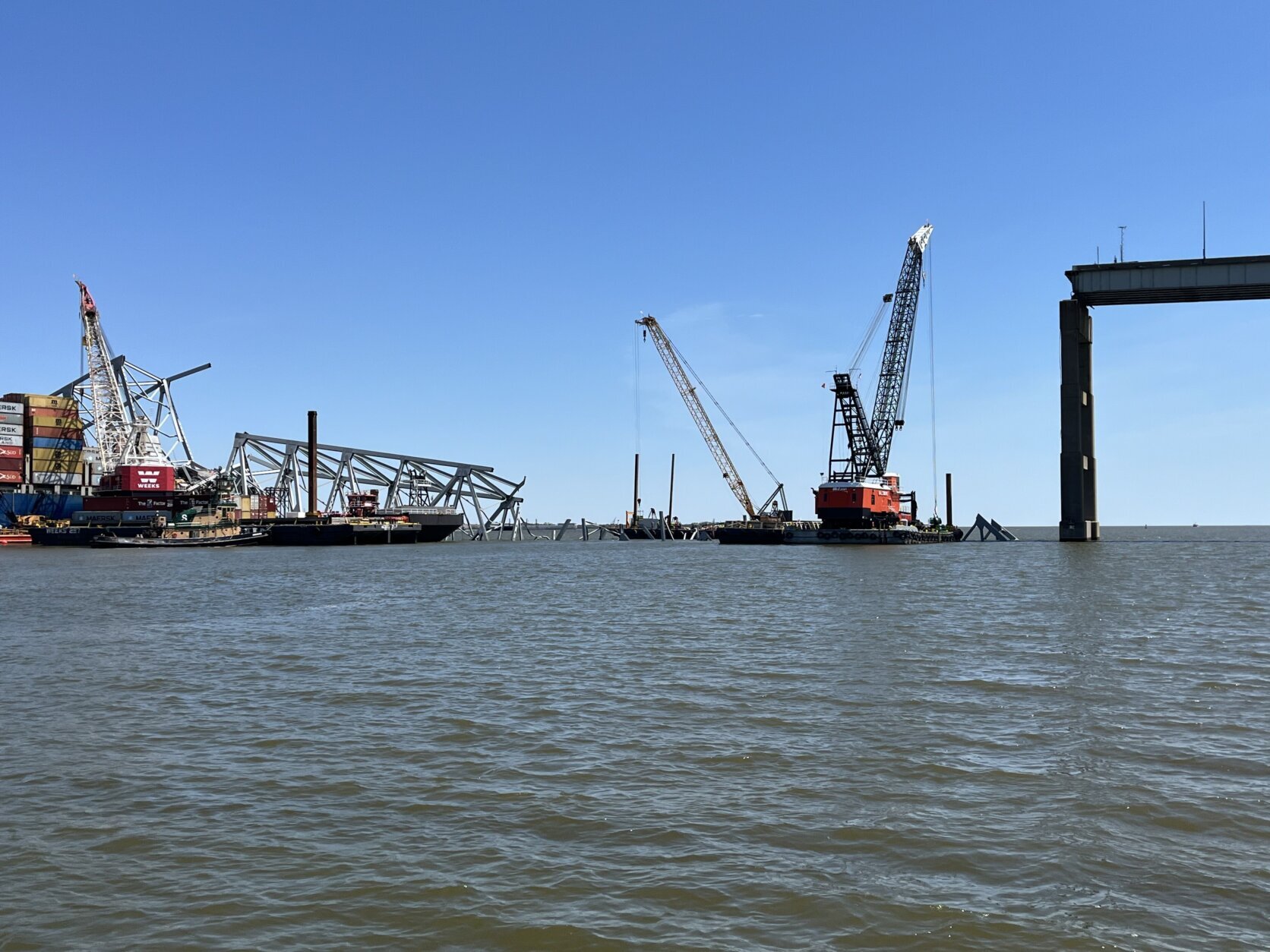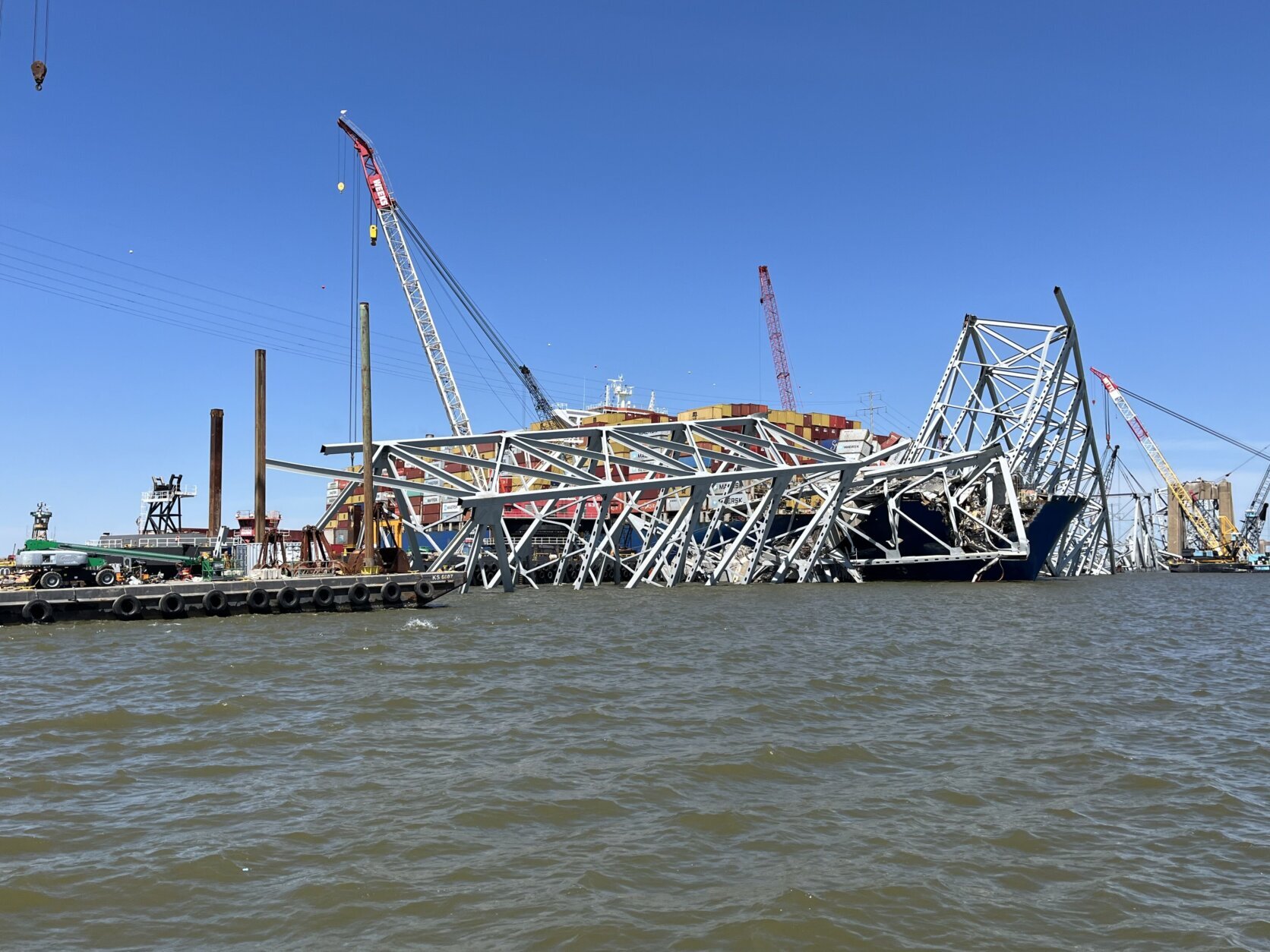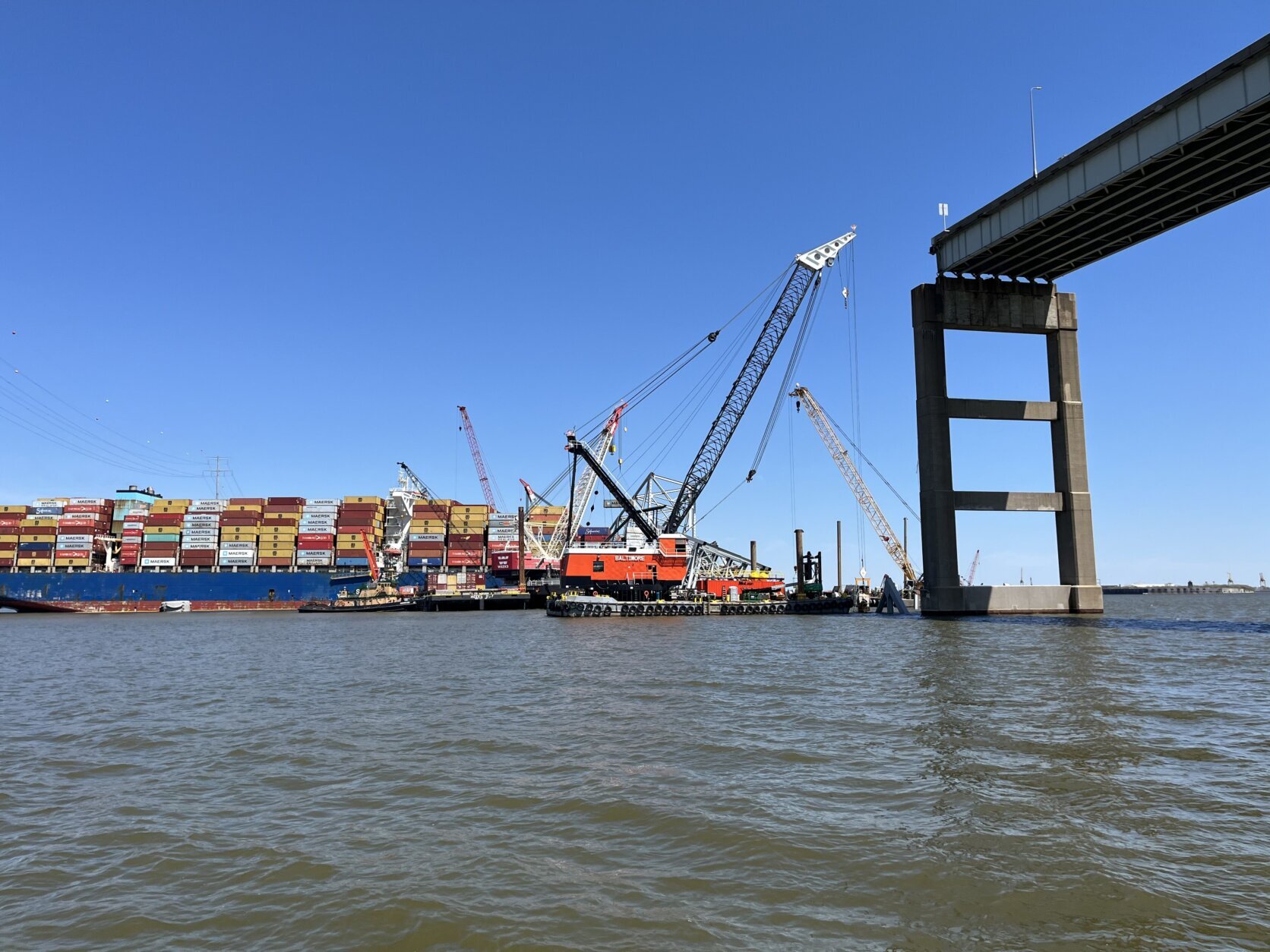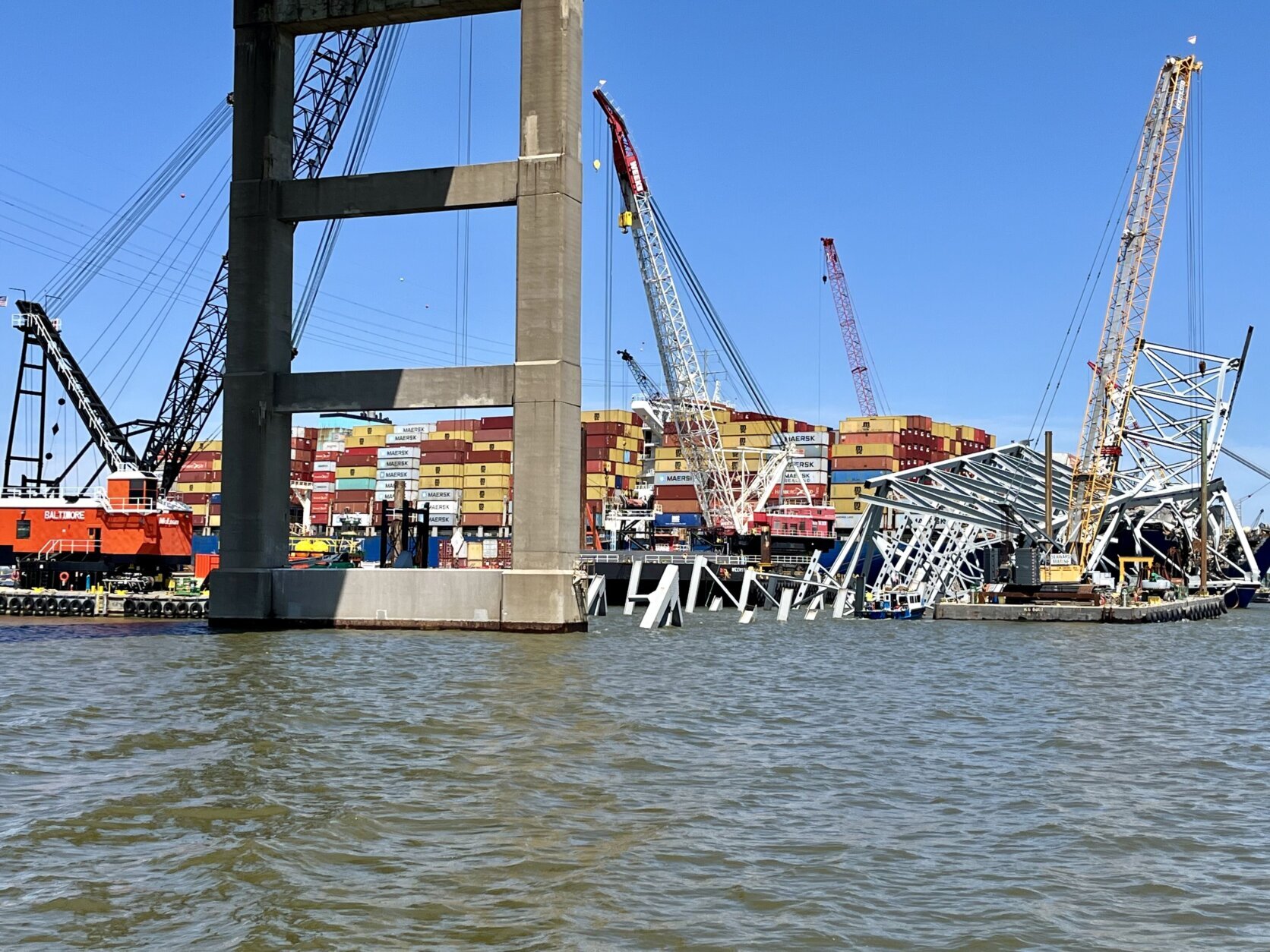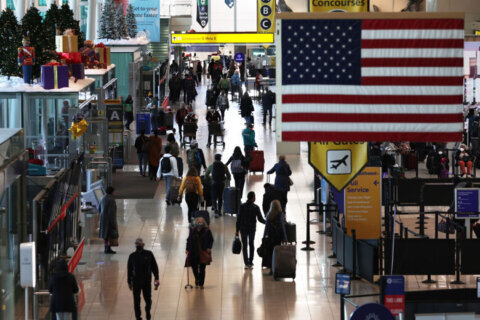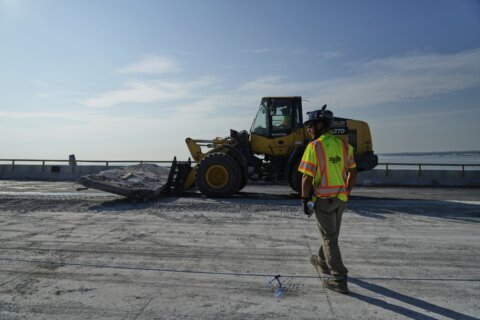This video is no longer available.
It has been three weeks since the Francis Scott Key Bridge in Baltimore, Maryland, collapsed after a cargo ship crashed into one of its support structures, and the U.S. Coast Guard is now taking journalists on boats to get a closer look at the wreckage and how it’s being cleared.
WTOP’s Nick Iannelli was one of just a few reporters who got the chance to do that Tuesday, circling the disaster site and getting a 360-degree view of the wreckage.
The boat was so close that rust could be seen along the bottom of the Dali cargo ship and all the individual containers stacked on top.
There were giant chunks of metal and concrete sticking out of the murky green water. At one point, the boat passed by several streetlights that were underwater, with their bulbs sticking out of the Patapsco River.
Reporters could see a massive hole in the front of the ship where debris from the bridge came tumbling down, slicing through the steel.
Crews have yet to remove 50,000 tons of debris, and to do that, they’ve brought in the largest crane on the Eastern Seaboard — the Chesapeake 1000.
The floating crane had its largest lift of steel Monday, pulling an estimated 450-ton piece of steel truss out of the river. That put the total to more than 1,000 tons of steel removed from the river.
More on the Baltimore Key Bridge collapse
- The latest on the Key Bridge collapse and recovery in Baltimore
- Interview with Army Corps of Engineers official on front line of Baltimore Key Bridge recovery
- FBI launches criminal investigation into Baltimore bridge collapse
One of the first priorities is to partially open the main shipping channel at the Port of Baltimore. Crews will then need to remove bridge debris from the cargo ship, get the ship out of the river and fully reopen the channel to commerce.
Officials have said all that will likely take another month, at least.
The bridge collapsed March 26 after being struck by the cargo ship Dali, which lost power shortly after leaving Baltimore, bound for Sri Lanka.
Those operating the ship issued a mayday alert with just enough time for police to stop traffic, but not enough to save a roadwork crew filling potholes on the bridge.
Authorities believe six workers — immigrants from Mexico, Guatemala, Honduras and El Salvador — plunged to their deaths. Four of their bodies have been found during an ongoing recovery operation.
The Associated Press contributed to this report.

